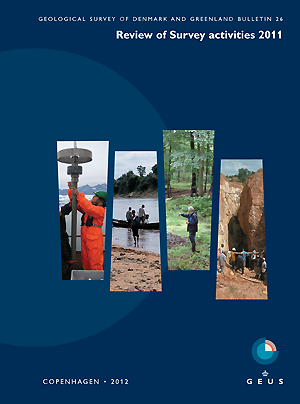Early Holocene sea-level changes in Øresund, southern Scandinavia
DOI:
https://doi.org/10.34194/geusb.v26.4744Abstract
The Baltic Sea and Kattegat are connected via three straits: Storebælt, Lillebælt and Øresund (Fig. 1). Øresund is the shallowest with a threshold around 7 m deep and increasing water depths to the north (Fig. 2). In the early Holocene, global sea-level rise led to reflooding of Øresund. It started in northern Øresund which was transformed into a fjord. However, so far the timing of the transgression has not been well determined, but sediment cores collected north of the threshold, at water depths of 12 to 20 m, and a new series of radiocarbon ages help to constrain this. As the relative sea level continued to rise, the threshold in Øresund was also flooded, and Øresund became a strait. In mid-Holocene time, the relative sea level rose until it was 4–5 m higher than at present, and low-lying areas around Øresund became small fjords. During the late Holocene, the relative sea level fell again. Part of the data set discussed here was presented by Andreasen (2005).
Downloads
Downloads
Published
How to Cite
Issue
Section
License
GEUS Bulletin is an open-access, peer-reviewed journal published by the Geological Survey of Denmark and Greenland (GEUS). This article is distributed under a CC-BY 4.0 licence, permitting free redistribution and reproduction for any purpose, even commercial, provided proper citation of the original work. Author(s) retain copyright over the article contents. Read the full open access policy.







